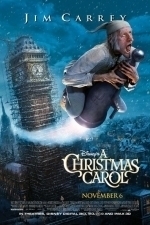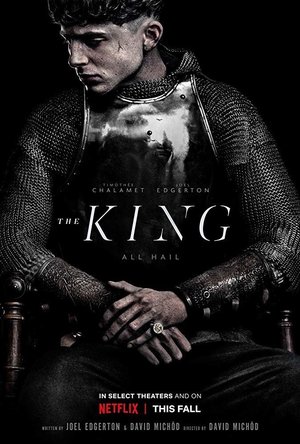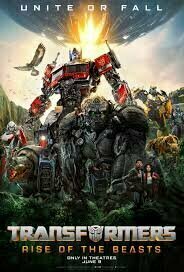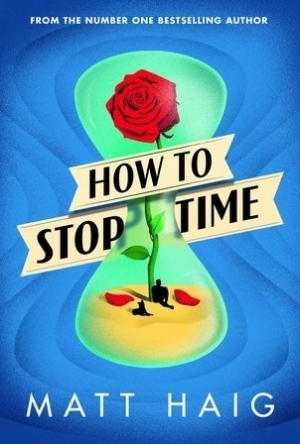Search
Search results
David McK (3649 KP) rated Blood's Game in Books
Jan 30, 2019
Like, I'm sure, many others, my first exposure to the writings of [a:Angus Donald|584064|Angus Donald|https://s.gr-assets.com/assets/nophoto/user/m_50x66-82093808bca726cb3249a493fbd3bd0f.png] was when I picked up [b:Outlaw|6624899|Outlaw (The Outlaw Chronicles, #1)|Angus Donald|https://images.gr-assets.com/books/1347668868s/6624899.jpg|6819139] on sale: a novel which reimagined the familiar character of Robin Hood, and which I thoroughly enjoyed: so much so that I made it a point to pick up all the novels in that series ([b:Outlaw|6624899|Outlaw (The Outlaw Chronicles, #1)|Angus Donald|https://images.gr-assets.com/books/1347668868s/6624899.jpg|6819139], [b:Holy Warrior|7710240|Holy Warrior (The Outlaw Chronicles, #2)|Angus Donald|https://images.gr-assets.com/books/1327539941s/7710240.jpg|10428506], [b:King's Man|11351795|King's Man (The Outlaw Chronicles, #3)|Angus Donald|https://images.gr-assets.com/books/1328436464s/11351795.jpg|16281574], [b:Warlord|13077584|Warlord (The Outlaw Chronicles, #4)|Angus Donald|https://images.gr-assets.com/books/1342984405s/13077584.jpg|18244685], [b:Grail Knight|20613734|Grail Knight (The Outlaw Chronicles #5)|Angus Donald|https://images.gr-assets.com/books/1410172817s/20613734.jpg|21976159], [b:The Iron Castle|19857964|The Iron Castle (Outlaw Chronicles, #6)|Angus Donald|https://images.gr-assets.com/books/1402550564s/19857964.jpg|27860558] and (finally) [b:The Death of Robin Hood|29348050|The Death of Robin Hood (The Outlaw Chronicles, #8)|Angus Donald|https://images.gr-assets.com/books/1467543641s/29348050.jpg|49585935]).
This, however, would be the first time I had read one of Donald's novels that concerned a different central character, and that had a different setting: would it, I wondered, be more of the same, or would it have it's own 'feel'?
The answer, I can now say, is the latter.
Replacing Alan-a-Dale with Holcroft Blood, and told in the more traditional her-and-know third-person narrative (instead of the conceit of an elderly Alan recalling his youthful adventures with Robin Hood), this particular novel deals with the (attempted) theft of the Crown Jewels from the Tower of England during the reign of King Charles II, not long after the restoration.
While that (attempted) theft is carried out by Thomas Blood - who was caught red-handed but later, incredibly, was granted a pardon by Charles II - this novel does not have Thomas as the central character: rather, instead, we follow the fortunes of his youngest son Holcroft: a son who, throughout the course of this novel, becomes friends with Sir John Churchill, the future Duke of Marlborough (and Winston Churchill's direct descendant).
Whether true or not, young Holcroft is portrayed in this as suffering from a mild form of Asperger's Syndrome, able to easily code and decode correspondence sent to his master The Duke of Buckingham from his various spies and informants: a skill that comes in handy in this tale! I have to say, too, that the court of King Charles II comes across as incredibly decadent, full of scheming and back-stabbing rivals out wholly for themselves ...
I'd be interested in seeing where this series goes, especially as the next entry ([b:Blood's Revolution|36146468|Blood's Revolution|Angus Donald|https://images.gr-assets.com/books/1504033386s/36146468.jpg|57749834]) concerns itself - at least, according to the blurb at the back of this - with what is (in this country - Northern Ireland - at least) a very divisive and pivotal moment in English history.
This, however, would be the first time I had read one of Donald's novels that concerned a different central character, and that had a different setting: would it, I wondered, be more of the same, or would it have it's own 'feel'?
The answer, I can now say, is the latter.
Replacing Alan-a-Dale with Holcroft Blood, and told in the more traditional her-and-know third-person narrative (instead of the conceit of an elderly Alan recalling his youthful adventures with Robin Hood), this particular novel deals with the (attempted) theft of the Crown Jewels from the Tower of England during the reign of King Charles II, not long after the restoration.
While that (attempted) theft is carried out by Thomas Blood - who was caught red-handed but later, incredibly, was granted a pardon by Charles II - this novel does not have Thomas as the central character: rather, instead, we follow the fortunes of his youngest son Holcroft: a son who, throughout the course of this novel, becomes friends with Sir John Churchill, the future Duke of Marlborough (and Winston Churchill's direct descendant).
Whether true or not, young Holcroft is portrayed in this as suffering from a mild form of Asperger's Syndrome, able to easily code and decode correspondence sent to his master The Duke of Buckingham from his various spies and informants: a skill that comes in handy in this tale! I have to say, too, that the court of King Charles II comes across as incredibly decadent, full of scheming and back-stabbing rivals out wholly for themselves ...
I'd be interested in seeing where this series goes, especially as the next entry ([b:Blood's Revolution|36146468|Blood's Revolution|Angus Donald|https://images.gr-assets.com/books/1504033386s/36146468.jpg|57749834]) concerns itself - at least, according to the blurb at the back of this - with what is (in this country - Northern Ireland - at least) a very divisive and pivotal moment in English history.
Gareth von Kallenbach (980 KP) rated A Christmas Carol (2009) in Movies
Aug 9, 2019
The timeless classic A Christmas Carol by Charles Dickens has been one of the most beloved and adapted stories in history. There have been numerous movies, plays, radio, and television shows that have told the story for several generations as well as adapted films such as “Scrooged” and “Ghosts of Girlfriends Past” which were inspired by the timeless tale of redemption.
The latest version of the film was created by Director Robert Zemeckis (who also wrote the screenplay for the film.) and presents it with stunning 3D effects.
The clever use of animation based on motion capture of the actors brings a new and unique look and style to the film that makes it contemporary yet does not diminish the Victorian England setting of the story.
In case you are one of the few that are not familiar with the tale, the story centers on a miserly curmudgeon, named Ebenezer Scrooge (Jim Carrey), who is so tight with a penny that he keeps the coal in his office locked up, forcing his employee Bob Crachit (Gary Oldman), to make do with one tiny piece a day during the cold of winter.
Scrooge has no love for anyone or anything aside from his work, and he spends his life in working and dispensing venom for all those that dare come into his world.
When he is invited to Christmas dinner by his nephew Fred (Colin Firth), Scrooge declines the offer abruptly and berates his nephew about the pointless nature of Christmas and how it serves no purpose. As if he was just getting warmed up, Scrooge then unleashes his fury on a local charity and informs them that if the needy were to die, then perhaps there would be less surplus population in the world.
Alone in his home on Christmas Eve, Scrooge is visited by the ghost of his old associate Jacob Marley, (Gary Oldman), who passed away seven years earlier. Marley is bound by the long chains he created in his life, and warns Scrooge not to make the mistakes he did and that there is still time for him to find redemption.
Scrooge is visited by the ghosts of Christmas past, present, and future who take Scrooge on a journey through his life, and show him the folly of his ways, and offer him a second chance to lead a better life with caring and compassion to all.
The solid cast really shines and many play multiple roles in the film. Carrey gives a strong performance and manages to reign in his over the top energy during the more dramatic parts of the film, and lets it out where appropriate. He subtly infuses comedy into the story without it ever taking the focus from the story.
The 3D effects were a real treat and it truly seemed like it was snowing in the theater and the numerous shots of London were truly amazing. While some may see it as a more modern adaptation, I found the film to be very true to the story, and was not only very entertaining, but a version that even Scrooge himself would enjoy as this is a new holiday classic that sets the bar for future adaptations of the story to aspire to.
The latest version of the film was created by Director Robert Zemeckis (who also wrote the screenplay for the film.) and presents it with stunning 3D effects.
The clever use of animation based on motion capture of the actors brings a new and unique look and style to the film that makes it contemporary yet does not diminish the Victorian England setting of the story.
In case you are one of the few that are not familiar with the tale, the story centers on a miserly curmudgeon, named Ebenezer Scrooge (Jim Carrey), who is so tight with a penny that he keeps the coal in his office locked up, forcing his employee Bob Crachit (Gary Oldman), to make do with one tiny piece a day during the cold of winter.
Scrooge has no love for anyone or anything aside from his work, and he spends his life in working and dispensing venom for all those that dare come into his world.
When he is invited to Christmas dinner by his nephew Fred (Colin Firth), Scrooge declines the offer abruptly and berates his nephew about the pointless nature of Christmas and how it serves no purpose. As if he was just getting warmed up, Scrooge then unleashes his fury on a local charity and informs them that if the needy were to die, then perhaps there would be less surplus population in the world.
Alone in his home on Christmas Eve, Scrooge is visited by the ghost of his old associate Jacob Marley, (Gary Oldman), who passed away seven years earlier. Marley is bound by the long chains he created in his life, and warns Scrooge not to make the mistakes he did and that there is still time for him to find redemption.
Scrooge is visited by the ghosts of Christmas past, present, and future who take Scrooge on a journey through his life, and show him the folly of his ways, and offer him a second chance to lead a better life with caring and compassion to all.
The solid cast really shines and many play multiple roles in the film. Carrey gives a strong performance and manages to reign in his over the top energy during the more dramatic parts of the film, and lets it out where appropriate. He subtly infuses comedy into the story without it ever taking the focus from the story.
The 3D effects were a real treat and it truly seemed like it was snowing in the theater and the numerous shots of London were truly amazing. While some may see it as a more modern adaptation, I found the film to be very true to the story, and was not only very entertaining, but a version that even Scrooge himself would enjoy as this is a new holiday classic that sets the bar for future adaptations of the story to aspire to.
Darren (1599 KP) rated The King (2019) in Movies
Nov 27, 2019
Verdict: Another King Fighting Film
Story: The King starts as the war between the English and the Scots continues to rage on, King Henry IV (Mendlesohn) is getting tired of the bloodshed and disloyalty being found in his own soldiers and with his health getting worse he recalls his son Hal (Chalamet) to his side.
As Hal find himself in a new power, he doesn’t know who to trust, so he turns to Falstaff (Edgerton) to help him in battle, with in latest battle being with the future French king The Dauphin (Pattinson).
Thoughts on The King
Characters – Hal is the young prince that would become King, a role he isn’t ready for, he doesn’t want to see large scale bloodshed like his father’s reign, but finds his country in war from all sides, he wants to end the battles and will look for solutions, which don’t always work for him. Falstaff is the man Hal turns to for advice when it comes to conflict, he thought under King Richard and he knows how to outsmart an enemy, first he must give up his drinking problem though. The Dauphin is next in line to be king of France, he is leading the armies into battle and doesn’t want any part of a deal with the King of England.
Performances – Timothee Chalamet is strong in the leading role, continuing to put himself on the right path to do anything he wants to in the future. Joel Edgerton is always a great supporting star in any movie, this is no different, while Robert Pattinson as the villainous soon to be king does a great job too.
Story – The story here follows a young king taking his place on the throne while his country is involved in wars that he never started and now he wants to end, hoping to find a more peaceful way to end the battles, forcing him to learn the truth about the bitter war between the nations. This is one of those stories which once again puts our history out there for the world to see with the English being seen as an all-conquering nation that always believed they were right, the spin is seeing how the young king wants to try and find a more peaceful way to end things, but just doesn’t get a chance to solve these problems. The pacing follows everything we have seen before, not making this standout on any means whatsoever, which just leads us to disappointment once again.
Biopic/History – This is a film that claims to tell the story of a real king and how he was brave, just like every single one through the years, we don’t know what he was like or what the battles were like, we only know the outcome.
Settings – The settings show us how the kingdoms are beautiful and how the battlefields are covered in blood and bodies.
Scene of the Movie – The battle.
That Moment That Annoyed Me – It is the same typical history story.
Final Thoughts – This is one of the period piece dramas that does everything it needs to without giving us the complete truth to what is happening with the real history.
Overall: Simple Royalty Film.
As Hal find himself in a new power, he doesn’t know who to trust, so he turns to Falstaff (Edgerton) to help him in battle, with in latest battle being with the future French king The Dauphin (Pattinson).
Thoughts on The King
Characters – Hal is the young prince that would become King, a role he isn’t ready for, he doesn’t want to see large scale bloodshed like his father’s reign, but finds his country in war from all sides, he wants to end the battles and will look for solutions, which don’t always work for him. Falstaff is the man Hal turns to for advice when it comes to conflict, he thought under King Richard and he knows how to outsmart an enemy, first he must give up his drinking problem though. The Dauphin is next in line to be king of France, he is leading the armies into battle and doesn’t want any part of a deal with the King of England.
Performances – Timothee Chalamet is strong in the leading role, continuing to put himself on the right path to do anything he wants to in the future. Joel Edgerton is always a great supporting star in any movie, this is no different, while Robert Pattinson as the villainous soon to be king does a great job too.
Story – The story here follows a young king taking his place on the throne while his country is involved in wars that he never started and now he wants to end, hoping to find a more peaceful way to end the battles, forcing him to learn the truth about the bitter war between the nations. This is one of those stories which once again puts our history out there for the world to see with the English being seen as an all-conquering nation that always believed they were right, the spin is seeing how the young king wants to try and find a more peaceful way to end things, but just doesn’t get a chance to solve these problems. The pacing follows everything we have seen before, not making this standout on any means whatsoever, which just leads us to disappointment once again.
Biopic/History – This is a film that claims to tell the story of a real king and how he was brave, just like every single one through the years, we don’t know what he was like or what the battles were like, we only know the outcome.
Settings – The settings show us how the kingdoms are beautiful and how the battlefields are covered in blood and bodies.
Scene of the Movie – The battle.
That Moment That Annoyed Me – It is the same typical history story.
Final Thoughts – This is one of the period piece dramas that does everything it needs to without giving us the complete truth to what is happening with the real history.
Overall: Simple Royalty Film.

Rodigan: My Life in Reggae
Book
'THE BOOK THAT EVERY REGGAE FAN SHOULD READ' John Masouri, Echoes 'Rodigan can still claim a...
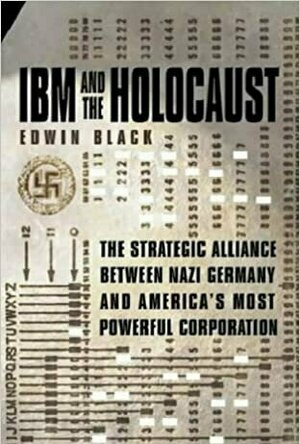
IBM and the Holocaust
Book
"IBM and the Holocaust" promises to reveal the international company's strategic alliance with Nazi...

Daily Shopping Stories (Full)
Education and Games
App
Welcome to Daily Shopping Stories, the most exciting, fun-filled animated shopping center ever! Buy...

Mending the Rift Box Set
Book
King's Conquest The only way for Prince Rin to save his kingdom is to marry a king and bear a...
M_M Fantasy Romance
Gareth von Kallenbach (980 KP) rated Transformers Rise of the Beasts (2023) in Movies
Jun 6, 2023
The latest in the long-running and popular Transformer series has arrived with “Transformers: Rise of the Beasts”. Taking a cue from the recent “Bumblebee” movie, the movie cleverly serves not only as a prequel but as a platform to introduce a series of stories leading up to the original films.
It is learned that a planet-destroying evil is fixated on obtaining a key that will allow it to travel to any point in the universe to continue its reign of destruction. The animal-based Maximals are able to escape with the key and hide it on Earth where they will also remain in secret as guardians.
Flash forward to 1994 when Noah Diaz (Anthony Ramos), following his stint in the Army is looking to find gainful employment to help his mother as well as his ailing brother. Despite being a wizard with electronics Noah is not considered to be a team player which has hampered his job prospects and leads him to consider criminal activities in an effort to obtain much-needed funds for his brother's medical bills.
In a moment of desperation, Noah attempts to steal a loaded Porsche but finds he is unable to follow through on the act as it is against his moral compass. Unknown to Noah the car is actually an Autobot named Mirage (Pete Davidson), who soon enlists Noah to help them find the key which they have recently detected.
This does not sit well with Optimus Prime (Peter Cullen), who believes that humanity will only act in your best interests and that his crew needs to find the key so that they can return to their war-ravaged, Cybertron.
It is learned that a crafty but perpetually overlooked museum intern named Elena (Dominique Fishback), has accidentally activated the key and in doing so has allowed the evil Scourge (Peter Dinklage), and his minions to zero in on its location as he attempts to obtain the key for his master and is willing to destroy all were in his way.
Noah and Elena soon find themselves paired with their unexpected allies as they race to stop the evil from obtaining both parts of the key and find themselves with some unexpected allies in the form of the Maximals.
What follows is a frantic action-adventure film that cleverly combines humor, action, dazzling visual effects, and a tail that is part Indiana Jones, and Transformers with a surprising amount of humanity.
It would be easy for the human cast the overshadowed by the massive and visually spectacular creations that frequently transform and battle it out across numerous action sequences. However, director Steven Caple Jr. takes advantage of his young talent both of whom are clearly potential stars in the making as they provide a grounding humanity to the film which makes it more than a lavish FX showcase.
The film also has an impressive era-specific soundtrack and a scene near the end that offers up some intriguing and exciting possibilities for the future. "Transformers: Rise of the Beasts" is a highly enjoyable summer action adventure as well as one the more enjoyable films in the franchise and should delight fans of the franchise and has me for the first time in a long time eagerly awaiting what comes next.
4 stars out of 5
It is learned that a planet-destroying evil is fixated on obtaining a key that will allow it to travel to any point in the universe to continue its reign of destruction. The animal-based Maximals are able to escape with the key and hide it on Earth where they will also remain in secret as guardians.
Flash forward to 1994 when Noah Diaz (Anthony Ramos), following his stint in the Army is looking to find gainful employment to help his mother as well as his ailing brother. Despite being a wizard with electronics Noah is not considered to be a team player which has hampered his job prospects and leads him to consider criminal activities in an effort to obtain much-needed funds for his brother's medical bills.
In a moment of desperation, Noah attempts to steal a loaded Porsche but finds he is unable to follow through on the act as it is against his moral compass. Unknown to Noah the car is actually an Autobot named Mirage (Pete Davidson), who soon enlists Noah to help them find the key which they have recently detected.
This does not sit well with Optimus Prime (Peter Cullen), who believes that humanity will only act in your best interests and that his crew needs to find the key so that they can return to their war-ravaged, Cybertron.
It is learned that a crafty but perpetually overlooked museum intern named Elena (Dominique Fishback), has accidentally activated the key and in doing so has allowed the evil Scourge (Peter Dinklage), and his minions to zero in on its location as he attempts to obtain the key for his master and is willing to destroy all were in his way.
Noah and Elena soon find themselves paired with their unexpected allies as they race to stop the evil from obtaining both parts of the key and find themselves with some unexpected allies in the form of the Maximals.
What follows is a frantic action-adventure film that cleverly combines humor, action, dazzling visual effects, and a tail that is part Indiana Jones, and Transformers with a surprising amount of humanity.
It would be easy for the human cast the overshadowed by the massive and visually spectacular creations that frequently transform and battle it out across numerous action sequences. However, director Steven Caple Jr. takes advantage of his young talent both of whom are clearly potential stars in the making as they provide a grounding humanity to the film which makes it more than a lavish FX showcase.
The film also has an impressive era-specific soundtrack and a scene near the end that offers up some intriguing and exciting possibilities for the future. "Transformers: Rise of the Beasts" is a highly enjoyable summer action adventure as well as one the more enjoyable films in the franchise and should delight fans of the franchise and has me for the first time in a long time eagerly awaiting what comes next.
4 stars out of 5
Hazel (1853 KP) rated How to Stop Time in Books
Jun 30, 2017
Favourite book of 2017 so far
This eBook was provided by the publisher via NetGalley in exchange for an honest review
All the world’s a stage/And all the men and women merely players/They have their exits and their entrances/And one man in his time plays many parts …
How to Stop Time is British author Matt Haig’s latest novel, and a very interesting one it is, too. In the present day, Tom Hazard is a 40-something-looking man who has landed himself with the position of history teacher at a comprehensive school in Tower Hamlets. Despite not having any formal training, Tom is the perfect candidate for the position because, despite his looks, he is 439 years old. But, that is a secret that no one must ever discover.
The book jumps back and forth between the current time period and flashbacks to various events during Tom’s extensive past. Born in 1581, Tom has experienced a great part of British history and major events around the world. Constantly changing his name and identification, he moved around the world, switching locations whenever people began to get suspicious of his never-aging body.
After a couple of centuries, Tom met a man with the same condition as himself, who revealed that there were many people in the same predicament. Promising to be able to help keep him safe, the stranger coerces Tom into a union called the Albatross Society. There are many rules and conditions to follow, however, the most important advice is to never fall in love. Unfortunately, Tom has already done this.
In London 1623, Tom met the love of his life, Rose, who he eventually married and with whom he had a daughter. Although Tom does age, it is at the rate of one year every 15; therefore he eventually had to leave his family in order to keep them safe. However, his daughter Marion has inherited his condition and Tom spends his subsequent years trying to find her. With promises to help him on his quest, Tom reluctantly joins the Albatross Society, despite their questionable ways.
All Tom wants is to be able to lead a normal life, yet the narrative reveals how impossible this has been, both in the past and now in the present. From Elizabethan England to Elizabeth II’s reign, Tom lives through several monarchs, wars, colloquial changes, industrialisation, sanitisation of comestibles, and the introduction of digital technology. Without the added pressure of keeping his true identity disguised, it is very interesting to experience historical events through the eyes of the protagonist.
The ending, unfortunately, does not quite satisfy the growing excitement and interest of the rest of the novel. Important things happen too quickly, making it confusing to understand the main storyline. The majority of the story appears to only be setting the scene for the final couple of chapters, but as this is so fascinating, there cannot be too much complaint.
Presuming that Haig has done his research and that the historical periods are factually correct, How to Stop Time is as educational as it is entertaining. History lovers will enjoy reading about famous people such as Shakespeare and Charlie Chaplin, as well as getting an insight into the daily lives of past societies. Most importantly, Tom is a captivating character, who, despite having lived for four centuries, is still as socially awkward as the best of us.
How to Stop Time contains a fantastic concept about the progression of time and aging, but its most poignant point is the emphasis on finding and being you. Change is an inevitable certainty, as witnessed by Tom whose current world looks nothing like his memories. Although people must adapt to the on-going changes, living how you want is more important than adjusting to fit in with everyone else. In essence, do not be afraid to let the world see your true self.
All the world’s a stage/And all the men and women merely players/They have their exits and their entrances/And one man in his time plays many parts …
How to Stop Time is British author Matt Haig’s latest novel, and a very interesting one it is, too. In the present day, Tom Hazard is a 40-something-looking man who has landed himself with the position of history teacher at a comprehensive school in Tower Hamlets. Despite not having any formal training, Tom is the perfect candidate for the position because, despite his looks, he is 439 years old. But, that is a secret that no one must ever discover.
The book jumps back and forth between the current time period and flashbacks to various events during Tom’s extensive past. Born in 1581, Tom has experienced a great part of British history and major events around the world. Constantly changing his name and identification, he moved around the world, switching locations whenever people began to get suspicious of his never-aging body.
After a couple of centuries, Tom met a man with the same condition as himself, who revealed that there were many people in the same predicament. Promising to be able to help keep him safe, the stranger coerces Tom into a union called the Albatross Society. There are many rules and conditions to follow, however, the most important advice is to never fall in love. Unfortunately, Tom has already done this.
In London 1623, Tom met the love of his life, Rose, who he eventually married and with whom he had a daughter. Although Tom does age, it is at the rate of one year every 15; therefore he eventually had to leave his family in order to keep them safe. However, his daughter Marion has inherited his condition and Tom spends his subsequent years trying to find her. With promises to help him on his quest, Tom reluctantly joins the Albatross Society, despite their questionable ways.
All Tom wants is to be able to lead a normal life, yet the narrative reveals how impossible this has been, both in the past and now in the present. From Elizabethan England to Elizabeth II’s reign, Tom lives through several monarchs, wars, colloquial changes, industrialisation, sanitisation of comestibles, and the introduction of digital technology. Without the added pressure of keeping his true identity disguised, it is very interesting to experience historical events through the eyes of the protagonist.
The ending, unfortunately, does not quite satisfy the growing excitement and interest of the rest of the novel. Important things happen too quickly, making it confusing to understand the main storyline. The majority of the story appears to only be setting the scene for the final couple of chapters, but as this is so fascinating, there cannot be too much complaint.
Presuming that Haig has done his research and that the historical periods are factually correct, How to Stop Time is as educational as it is entertaining. History lovers will enjoy reading about famous people such as Shakespeare and Charlie Chaplin, as well as getting an insight into the daily lives of past societies. Most importantly, Tom is a captivating character, who, despite having lived for four centuries, is still as socially awkward as the best of us.
How to Stop Time contains a fantastic concept about the progression of time and aging, but its most poignant point is the emphasis on finding and being you. Change is an inevitable certainty, as witnessed by Tom whose current world looks nothing like his memories. Although people must adapt to the on-going changes, living how you want is more important than adjusting to fit in with everyone else. In essence, do not be afraid to let the world see your true self.
Acanthea Grimscythe (300 KP) rated Highwayman in Books
May 16, 2018
It's a bit hard for me to really talk about how I felt while reading Highwayman by Craig Saunders. To some extent, I feel that I may not know as much about old lore and mythology as I thought I did - and that's definitely a possibility. The concept behind the book is intriguing, but there are many elements of Saunders story that failed to satisfy me.
In the wake of a plane crash, Karl Goodman finds himself in-between life and death - a sort of limbo that I felt was reminiscent of an episode of Supernatural where Castiel and Dean are fighting vampires in purgatory. I say this largely because of the whole Fog-World/forest atmosphere. In this surreal world, a murderer from centuries past is able to cross the lines between the worlds of the living and dead to continue visiting his reign of horror upon unsuspecting individuals. Guided by the Deans, who appear to be a set of reapers, for lack of a better term (or maybe ferrymen), and a young, comatose girl named Imke, Karl finds himself seeking out this murderous highwayman so that he can exact revenge for his daughter's death.
While I have a strong love for the supernatural and paranormal, I couldn't help but find myself confused more often than not by several aspects of the story. I am, admittedly, ignorant of the White Hart and the Green Man, but I like to think I'm a bit more versed in the many varieties of spooks. In fact, Saunders portrayal of a barrow-wight did not stray unreasonably far from its native draugr. What does baffle me though is how Saunders introduces these supernatural elements into his book. When I received Highwayman, I was expecting something dark and macabre that dealt with... well, with highwaymen. The main villain of the tale is precisely that, but the book itself is largely a ghost story. That isn't necessarily a problem, but it simply did not sit very well with me.
To further complicate the telling of the story, there are far too many differing points of view - five or six, total. (I can't remember if there was a part told from Mr. Dean's perspective.) This makes it hard to keep track of the passage of time, and whether or not that is intentional, I found it bothersome. For instance, at one point Bethany, Karl's wife, does something. Then, for several chapters, the story does not return to her. In fact, the disparity between returning to her point of view was so great that I actually thought that Saunders had forgotten about her.
One of the other issues that bothered me was the circumstances of Karl and Bethany's daughter's death. At first it is explained as a drowning, but then later we learn it was not. Apparently her murder was so horrid that Karl conveniently blocked the tragedy from his mind with a far more "rational" explanation, and to me this felt more like slapping a bandaid on a forgotten plot element than something that was done naturally.
At no point during my reading of this book did I feel any sort of emotion or attachment to any of the characters, and I found that to be extremely disappointing. The cast of Highwayman are not, in any way, extraordinary (well, not depth wise), and that made it harder for me to get into the book.
Overall, I didn't care much for Highwayman; however I will not let that discourage me from reading more of Saunders' work in the future. As part of the DarkFuse Reader's Group, I received an advance copy of this book in exchange for an honest review. I would like to thank DarkFuse, Craig Saunders, and NetGalley for this opportunity.
In the wake of a plane crash, Karl Goodman finds himself in-between life and death - a sort of limbo that I felt was reminiscent of an episode of Supernatural where Castiel and Dean are fighting vampires in purgatory. I say this largely because of the whole Fog-World/forest atmosphere. In this surreal world, a murderer from centuries past is able to cross the lines between the worlds of the living and dead to continue visiting his reign of horror upon unsuspecting individuals. Guided by the Deans, who appear to be a set of reapers, for lack of a better term (or maybe ferrymen), and a young, comatose girl named Imke, Karl finds himself seeking out this murderous highwayman so that he can exact revenge for his daughter's death.
While I have a strong love for the supernatural and paranormal, I couldn't help but find myself confused more often than not by several aspects of the story. I am, admittedly, ignorant of the White Hart and the Green Man, but I like to think I'm a bit more versed in the many varieties of spooks. In fact, Saunders portrayal of a barrow-wight did not stray unreasonably far from its native draugr. What does baffle me though is how Saunders introduces these supernatural elements into his book. When I received Highwayman, I was expecting something dark and macabre that dealt with... well, with highwaymen. The main villain of the tale is precisely that, but the book itself is largely a ghost story. That isn't necessarily a problem, but it simply did not sit very well with me.
To further complicate the telling of the story, there are far too many differing points of view - five or six, total. (I can't remember if there was a part told from Mr. Dean's perspective.) This makes it hard to keep track of the passage of time, and whether or not that is intentional, I found it bothersome. For instance, at one point Bethany, Karl's wife, does something. Then, for several chapters, the story does not return to her. In fact, the disparity between returning to her point of view was so great that I actually thought that Saunders had forgotten about her.
One of the other issues that bothered me was the circumstances of Karl and Bethany's daughter's death. At first it is explained as a drowning, but then later we learn it was not. Apparently her murder was so horrid that Karl conveniently blocked the tragedy from his mind with a far more "rational" explanation, and to me this felt more like slapping a bandaid on a forgotten plot element than something that was done naturally.
At no point during my reading of this book did I feel any sort of emotion or attachment to any of the characters, and I found that to be extremely disappointing. The cast of Highwayman are not, in any way, extraordinary (well, not depth wise), and that made it harder for me to get into the book.
Overall, I didn't care much for Highwayman; however I will not let that discourage me from reading more of Saunders' work in the future. As part of the DarkFuse Reader's Group, I received an advance copy of this book in exchange for an honest review. I would like to thank DarkFuse, Craig Saunders, and NetGalley for this opportunity.

